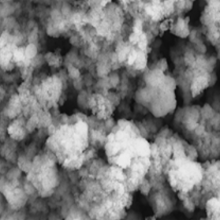The energy crisis and environmental pollution caused by the burning of fossil fuels have attracted worldwide attention. The development of green energy and advanced energy storage devices is an important way to solve the above problems. Hydrogen is a clean energy to support Zero-Carbon energy strategies. Electrochemical water splitting is an effective way to obtain green hydrogen. Besides, highly efficient storing renewable energy (e.g. wind energy, tide energy) is another way to face the above problems. Li-battery is currently one of the most advanced energy storage devices.
High-entropy oxides (HEOs) were firstly reported in 2015. The HEOs mostly comprise five or more elemental components in an equimolar ratio, incorporated within a single-phase system. Due to the impacts of high entropy on thermodynamics and structure, the HEOs possess excellent properties, ranging from magnetic properties, to electrochemical properties, catalytic properties, and thermal conductive properties and so on.
HEOs therefor is a new novel and promising material candidate for active electrodes in both electrochemical water-splitting and Li-battery application with a rapidly increasing attention in the research community.
Precursor plasma spraying technique (PPS) was firstly used to deposit binder-free HEOs electrodes as it is a versatile method to create thin coatings with complex chemical compositions. The uniform distribution is attributed to the high process temperature and a high heating/cooling rate which is a characteristic of plasma spray processes. In first tests, the as-sprayed coatings exhibited a good performance in regarding their catalytic activity applied on electrode surface. They feature a finely structured fractal-like surface and can be applied on various electrode substrate materials.






